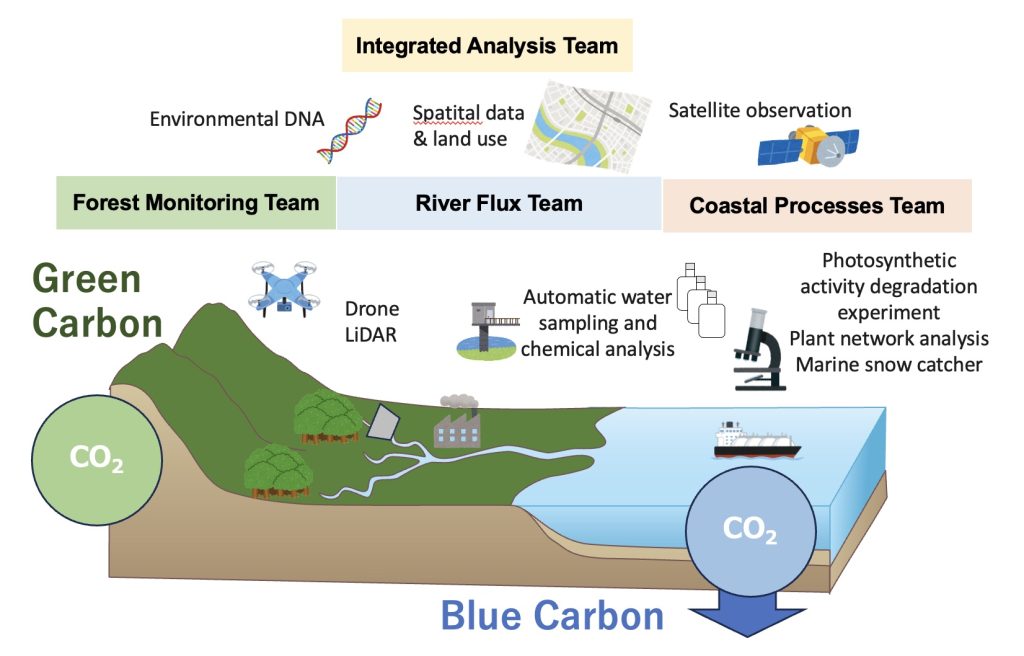To reduce atmospheric carbon dioxide (CO₂) concentrations—one of the central challenges in addressing climate change—and to achieve sustainable development, it is essential to take an integrated view of both terrestrial and marine systems and to understand carbon cycling processes across them. In the river basins of the Sakawa and Sagami Rivers, which flow into Sagami Bay—home to the Yokohama National University Coastal Environmental Research Center—various land-sea linkage initiatives are underway. These include forest management (such as fish-breeding forests) and biodiversity monitoring. The estuarine areas are connected to the Sagami Trough, where depths exceed 1,000 meters, making the region an ideal model basin for promoting both green carbon sequestration in the deep sea and blue carbon in coastal ecosystems.
Professor Maiko Kagami of the Institute of Environmental Science and Technology is leading a research project adopted in 2024 under JST’s CREST program, titled “Development of a Comprehensive Assessment Method for Carbon and Biodiversity Based on Land-Sea Linkages.” The project focuses on elucidating the roles of carbon and nutrients transported from terrestrial ecosystems in coastal ecosystems, and examining their relationships with biodiversity and carbon processes in forests and rivers.
By integrating ecosystem observation data from the entire watershed—from forests to the ocean—the research aims to develop methods for assessing carbon and biodiversity, analyze the relationships between carbon storage, land use, and biodiversity in the basin, and predict the future of both blue and green carbon. Ultimately, the project seeks to propose optimal models of land-sea connectivity and ecosystem management that enhance the ocean’s capacity for carbon sequestration.
.

.
Link:




